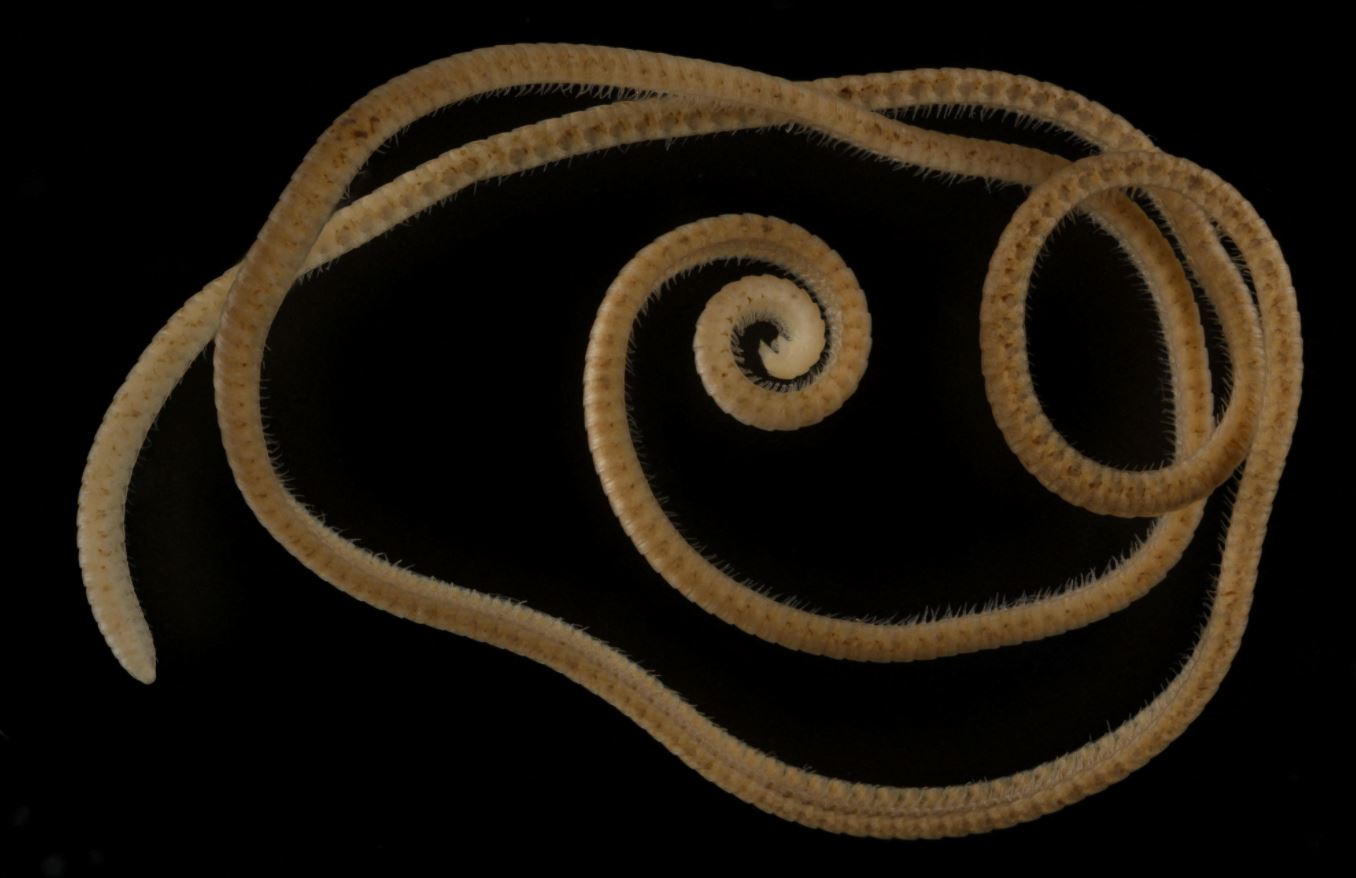Deep underground in an exploratory drill hole in a mining region of Australia, scientists have discovered a “marvel of evolution,” a remarkably elongated blind millipede possessing the most legs – 1,306, to be precise – of any known animal.
The threadlike pale-coloured millipede reaches about 95mm long and about 0.95mm wide, with a conical head, beak-shaped mouth and large antennae – likely one of its only sources of sensory input because it lacks eyes, scientists said on Thursday.
“Previously no known millipede actually had 1,000 legs despite the name millipede meaning ‘thousand feet,’” said Virginia Tech entomologist Paul Marek, lead author of the research published in the journal Scientific Reports.
The creature is called Eumillipes persephone. The handful of individuals discovered lived up to almost 60 metres underground. Females had more legs than males.
“In my opinion this is a stunning animal, a marvel of evolution,” said study co-author Bruno Buzatto, a principal biologist at Bennelongia Environmental Consultants in Perth, Australia.
“It represents the most extreme elongation found to date in millipedes, which were the first animals to conquer land. And this species in particular managed to adapt to living tens of meters deep in the soil, in an arid and harsh landscape where it is very hard to find any millipedes surviving in the surface,” Buzatto added.
Until now, the leggiest animal known was a California millipede species called Illacme plenipes, with 750 legs.
The researchers suspect that evolving so many legs helped Eumillipes.
“We believe that the large number of legs provides an advantage in terms of traction/force to push their bodies forward through small gaps and fractures in the soil where they live,” Buzatto said.
The species lives in complete darkness in a subterranean habitat loaded with iron and volcanic rocks. Lacking eyes, it uses other senses such as touch and smell to perceive its environment. It belongs to a family of fungi-eating millipedes, so the researchers suspect that is what it eats.
It was discovered in Western Australia state’s Goldfields-Esperance region in an area where miners dig for gold and other minerals including lithium and vanadium. Four Eumillipes individuals were described in the study and another four have been found. None of them were observed alive.







Click here to change your cookie preferences